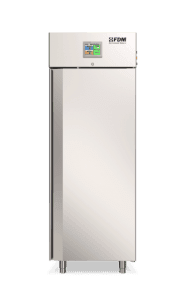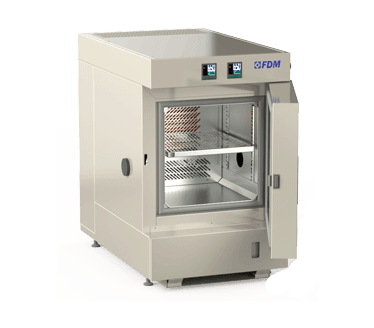
Climate testing plays a vital role in a wide range of industries, allowing specific environmental conditions to be simulated to test materials, products and devices in a controlled manner.
There are two parameters that cannot be missing from any climate test: temperature and humidity control.
The latter in fact plays a key function in ensuring that environmental conditions are precise and controlled.
Today we see how the humidity control system in climatic chambers works and why it is important.
What is the Humidity Control System
The humidity control system is a key element within the climatic chambers designed to regulate and maintain certain environmental parameters at specific levels, above all those of temperature and relative humidity.
Relative humidity is the ratio of the amount of water vapor present in the air compared to the maximum amount of water vapor that air could contain at a given temperature. It is calculated with a percentage between 0% and 100% and is one of the critical environmental factors that can significantly influence the behavior and performance of materials and products in different contexts.
The humidity control system allows you to monitor and stabilize the relative humidity level inside the climatic chamber in order to create realistic environmental conditions, reproducing humidity variations that can occur in real environments.
Perform
Climate Stress
Discover the new series of Climate Chambers for controlled climate testing
How the Humidity Control System Works:
The operation of the humidity control system in the climatic chambers uses technologically advanced sensors and regulation devices.
We can schematize its operation into two procedures: monitoring and regulation.
The sensors constantly monitor the humidity levels inside the climate chamber, transmitting the data to a centralized control system. The latter then regulates the release of humidity through devices such as steam generators or humidification systems. The precision of this process is critical to ensuring that the climate chamber maintains the specific humidity levels required for testing.
What is the Humidity Control System for?
Most climate tests involve constantly monitoring the relative humidity inside the climate chamber.
These tests are widely used in industries such as electronics, automotive, pharmaceuticals and many others.
In almost every climate test, even those that deal primarily with temperature, humidity must remain within certain levels. What these levels are is indicated in a series of international standards that recommend the ideal procedures, among these bodies we remember the ISO and the IEC.
Then there are tests that mainly investigate the effect of humidity on products and materials, for example the humidity resistance test which we talked about in detail here.
You cannot find the ideal chamber for your test?
Create your own environment, according to any test requirement
The Humidity Control System of FDM Climate Chambers
FDM - Environmental Makers has been dealing with climate tests for over 70 years, designing climatic and environmental chambers with the most advanced technologies available.
Among these, there is our humidity control system capable of reaching and maintaining relative humidity values from 10% to 98%, i.e. close to complete saturation.
For further doubts and questions, please do not hesitate to contact us.
Would you like to receive a quote or do you have questions about the product?
Contact us to receive more information about this Product.



